It only takes a few easy steps and a few simple ingredients to make sweet, smoky pulled pork that will melt in your mouth. It’s great for parties. With this simple recipe, you can turn a cheap pork shoulder into the best pulled pork you’ve ever had.
If you have never smoked before, pork shoulder is the best cut for you. It’s cheap, hard to mess up, and you’ll be able to impress everyone on your first try. This recipe takes this large, tough cut and turns it into sweet, smoky, fall-apart heaven. Savory, smokey, and supremely satisfying.
When seasoned just right, pork shoulder transforms from an ordinary cut of meat into a mouthwatering culinary masterpiece. Getting the ideal amount of salt is essential to bringing out the very best in pork shoulder and taking your dish to new heights of flavor. In this comprehensive guide, we will demystify the art of salting pork shoulder and equip you with expert tips to achieve pork shoulder perfection every time.
Why Proper Salting Matters for Pork Shoulder
Salting is far more than just adding flavor to pork shoulder Salt penetrates deep into the meat fibers, dissolving muscle proteins to help tenderize and improve moisture retention This results in a juicier and more succulent finished dish. Salt also enhances the savory umami notes of the pork, allowing its rich, meaty flavor to truly sing. Furthermore, salt controls undesirable microbes that can cause spoilage and foodborne illness. By salting properly, you ensure both food safety and an unforgettably delicious pork shoulder.
Recommended Salt-to-Meat Ratio
The generally recommended amount of salt for pork shoulder is 1/2 teaspoon of salt per pound of meat. This 1:2 salt-to-meat ratio provides a starting guideline that can be adjusted to taste. When salting an 8-10 pound pork shoulder roast or pork butt, you would use approximately 4-5 teaspoons of salt. For a 3-5 pound pork shoulder steak or chops, 2-3 teaspoons of salt is ideal. kosher salt or sea salt is best, as the flakes distribute evenly and add punchy flavor.
Key Factors that Impact Proper Salting
Several key factors can alter the ideal salt amount for pork shoulder:
-
Thickness – Thicker cuts require more salt for even penetration
-
Cooking method – Dry heat methods like smoking intensify saltiness.
-
Brining – Brined meat needs less added salt.
-
Other seasonings – Spices, herbs, and rubs affect salt needs.
-
Personal taste – Some prefer more or less salty flavor.
Considering these elements allows you to tailor the salting to suit the specific cut, recipe, and preferences.
Handling Salt Specifics and FAQs
How can I fix oversalted pork shoulder?
If pork shoulder ends up too salty, add a spoonful of vinegar or lemon juice to balance the flavor. Omit any extra salt garnishes before serving.
Does salt tenderize pork shoulder?
Yes! Salt dissolves tough muscle fibers to significantly improve tenderness.
Can I use a salt rub for pork shoulder?
Definitely. A salt-based spice rub adds incredible depth of flavor and crunch to the exterior.
How long should I let salt sit on pork?
Let salt rest on pork for at least 40 minutes before cooking for ideal penetration.
Can I brine pork shoulder instead of salting?
Absolutely! Brining infuses seasoned moisture for very juicy and flavorful pork. Reduce any added salt.
What about low-sodium diets?
Cut back on salt for health needs. Boost flavor with bold herbs, spices, vinegar, citrus instead.
Putting It All Together for Perfectly Salted Pork
Armed with this pork salting intel, you now have the expertise to achieve properly seasoned, outrageously delicious pork shoulder every time. A simple salt-to-meat ratio provides the foundation, which you can then build upon with your choice of herbs, spices, brines and cooking methods. So go forth and create extraordinary pork shoulder masterpieces worthy of the gods!

How to Smoke a Pork Shoulder (Pork Butt)
Step-by-Step to smoking a pork shoulder or pork butt. Start the day before you plan on cooking it for the best results.
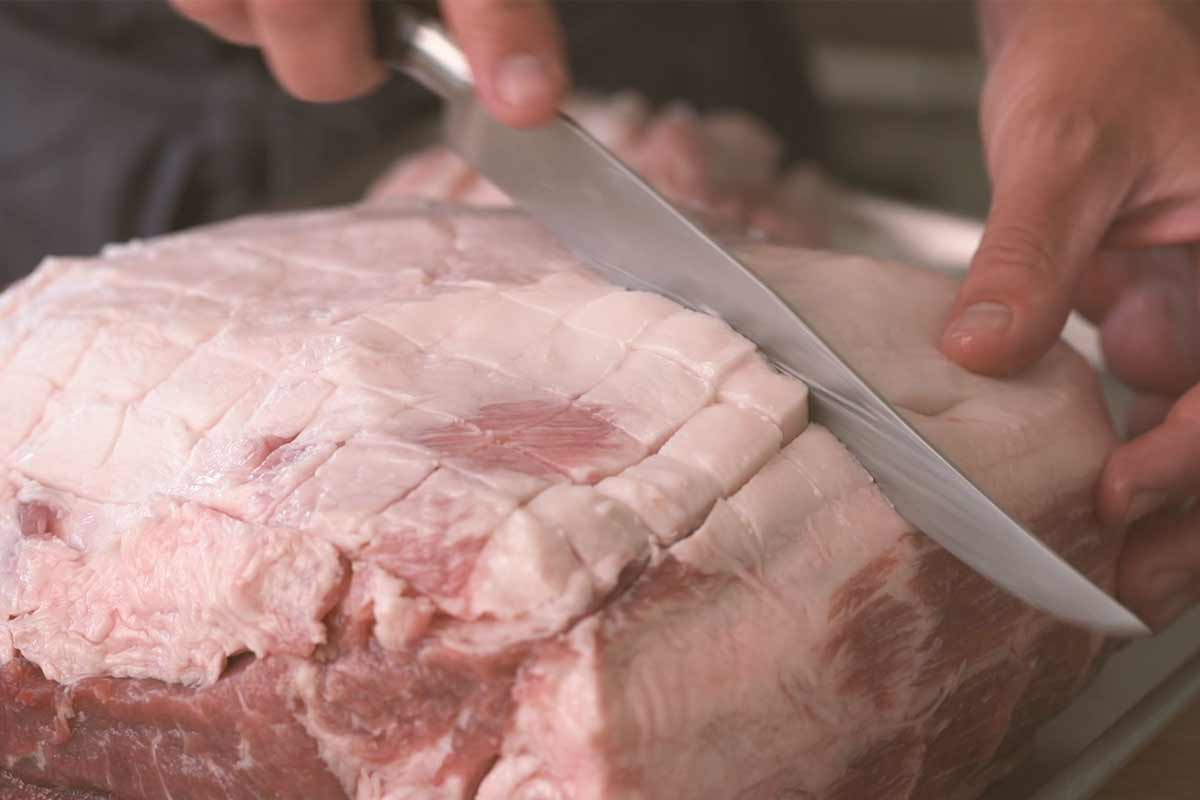
1. Prep the Pork Shoulder
Cut off the extra fat until it’s 1/4 inch thick, and while the pork is still cold, use a sharp knife to make crosshatch marks on the fat cap.
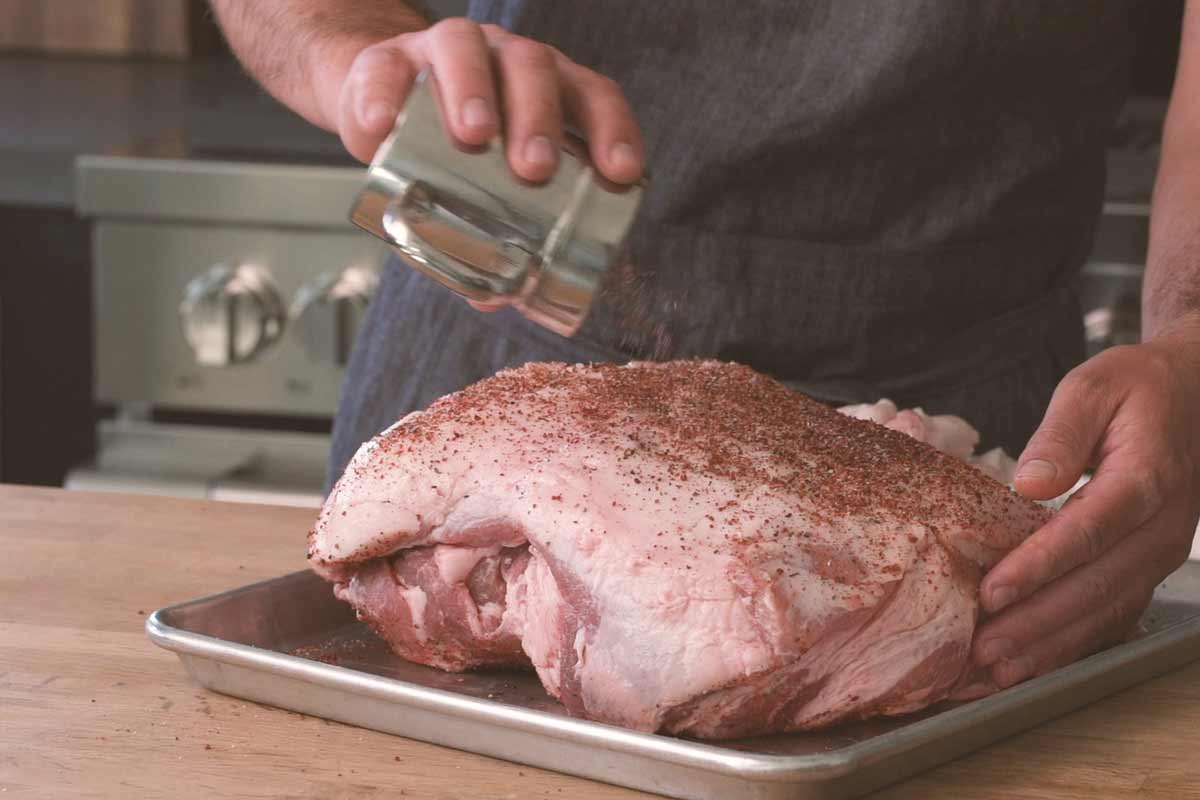
2. Season the Pork Shoulder
Season at least 1 hour before (24 hrs best). Kosher salt (use 1 teaspoon of Diamond kosher or 1/2 teaspoon of Morton’s per pound of meat) and a dry rub over the whole thing, then put it in the fridge uncovered.
*if your dry rub contains salt, omit salting separately.
Take it out of the fridge an hour before cooking and put a remote probe thermometer into the thickest part of the meat.

3. Setup and Preheat Your Smoker
Prep your smoker for indirect heat smoking.
For smoke, use apple or cherry wood and heat the grill to 250° F (121° C) with a water drip pan in place.
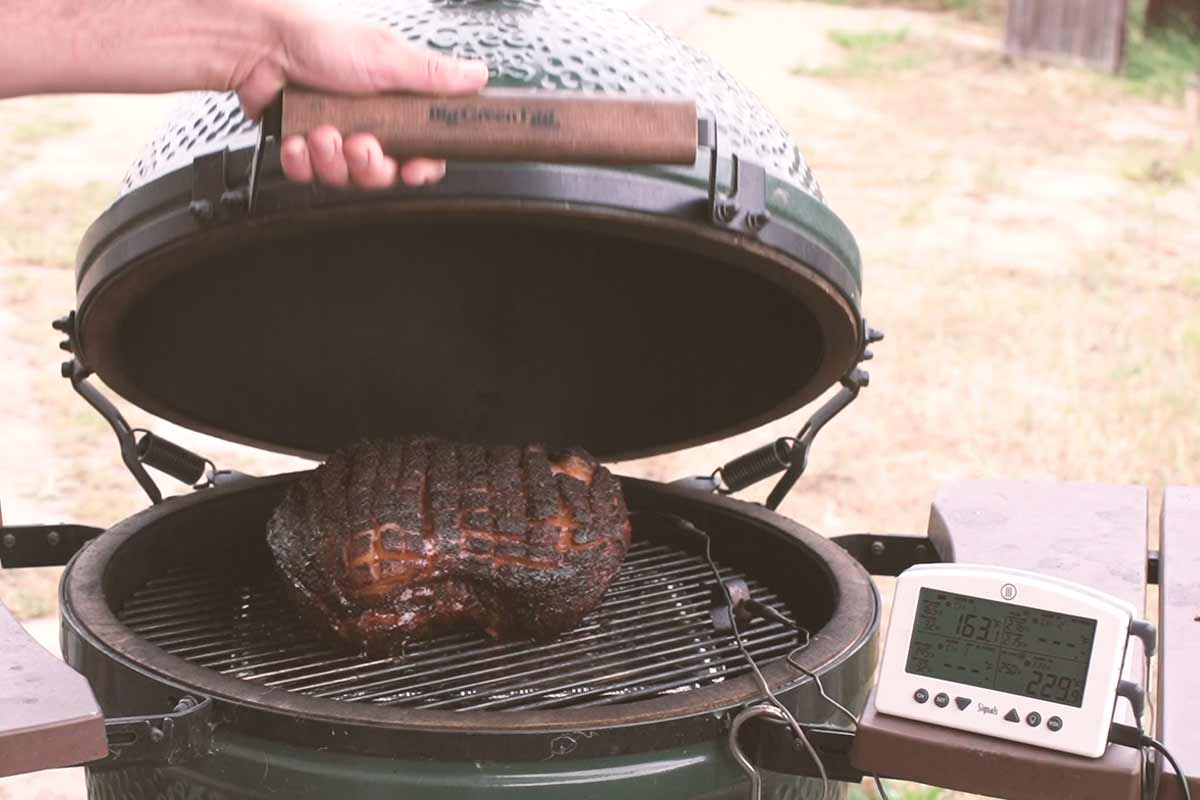
4. Smoke the Pork Shoulder
Place the pork shoulder in the smoker over the drip pan.
Smoke until the internal temperature reaches 195° to 205° F, which will take approximately 90 minutes per pound.
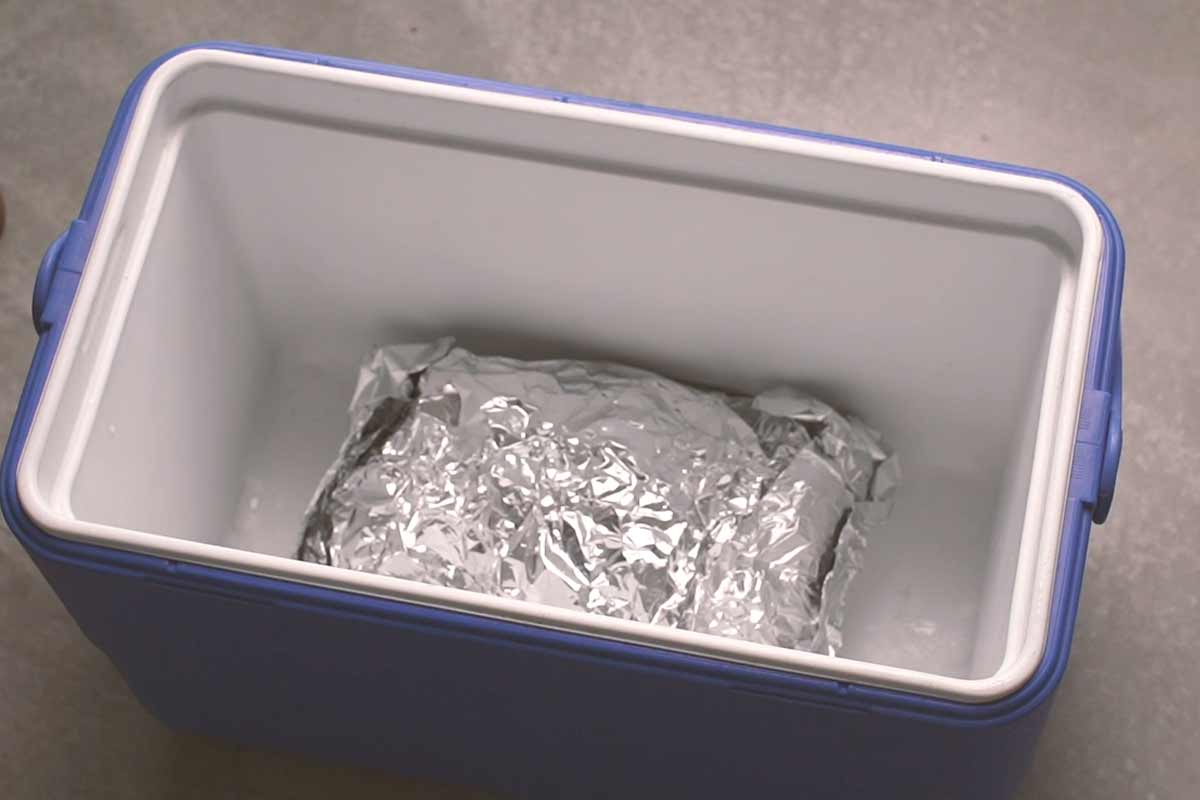
5. Rest It
Rest for at least 1 hour (longer is better). Wrap it in foil and place in a cooler to keep it warm.
If the pork is going to be resting for more than two hours, wrap it in clean towels to keep it even warmer in the cooler.
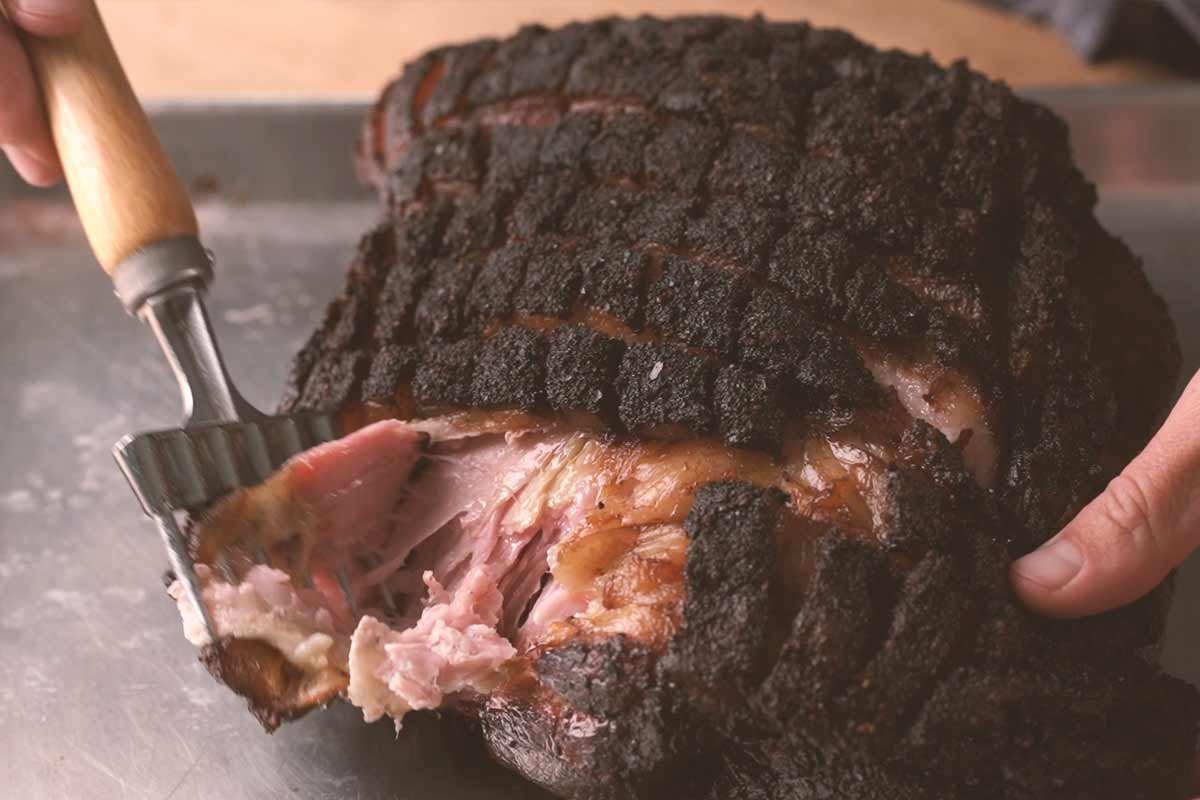
6. Shred it
If there is a bone, take it out of the package and shred it with your favorite tool, making sure to pull across the grain to keep the texture.
It’s much easier to shred the whole thing while it’s still warm rather than after it cools.
Place the pork shoulder in the smoker over the drip pan.
Smoke until the internal temperature reaches 195° to 205° F, which will take approximately 90 minutes per pound.
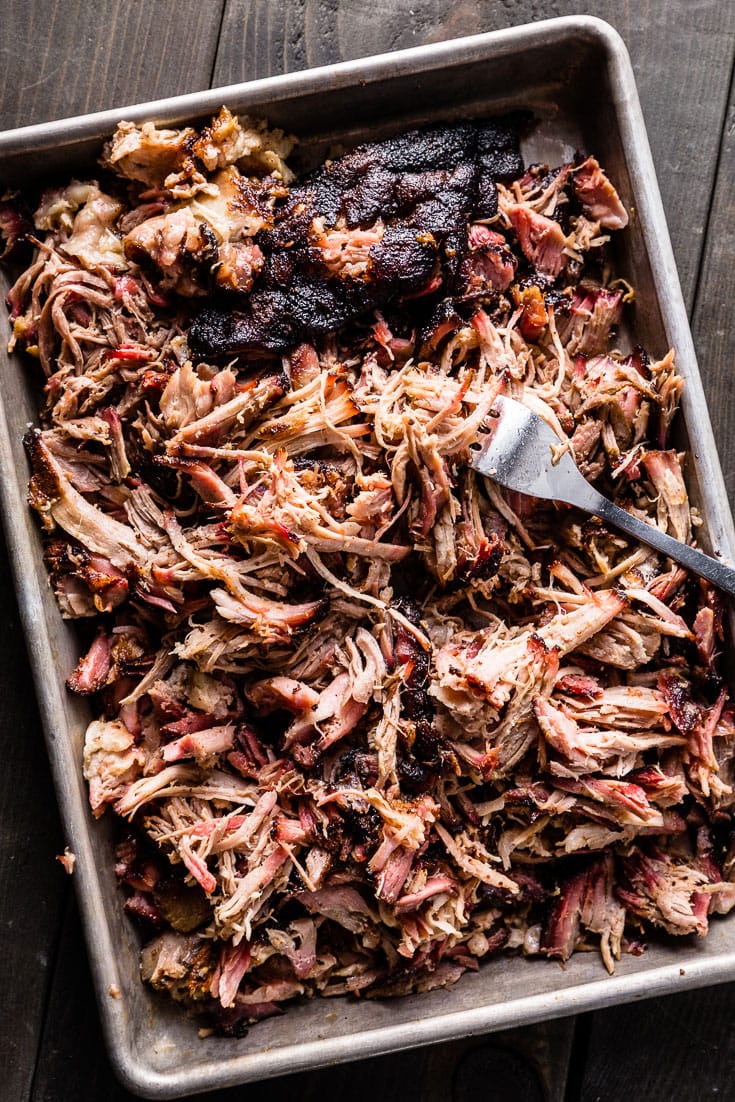
7. Serve & Enjoy
Optionally combine 1 to 2 cups of BBQ sauce or to taste if desired. Keep warm and serve.
Tip: Elevate the pulled pork by crisping it up in a hot cast iron skillet before serving.
Ideas for Using the Leftovers
The cook time for pork shoulder is around 90 minutes per pound in a 250° F smoker. A 4-pound pork shoulder will take approximately 6 hours. A 9-pound pork shoulder will take approximately 13 1/2 hours.
Sweet fruit woods like apple and cherry are perfect for pork. Oak, pecan and maple are great as well. Avoid stronger flavored woods like mesquite, as they can overpower the sweet flavor of the pork. Experiment and try mixing a few different types of wood to develop your own personal blend. I like to use apple and post oak. Learn more about the best woods for smoking.
No, there is usually no need to wrap pork shoulder until it is time to rest it. Because of how forgiving a pork shoulder is, wrapping it is generally not necessary. I prefer to develop extra bark and not wrap it and have always had fantastic results. If you don’t want your pork shoulder to dry out or if you need to cook it faster, you could wrap it around 165° F.
As a general rule, you should plan to serve each person about 3/4 pound (12 ounces) of raw, boneless pork shoulder, which is enough for 1/2 pound (8 ounces) of cooked meat. This includes cutting down on some fat and cooking, both of which will make you lose weight because the fat will render away water. But if you want to have leftovers or have people who eat a lot, you might want to go with the higher end of this range or even 1 pound per person.
